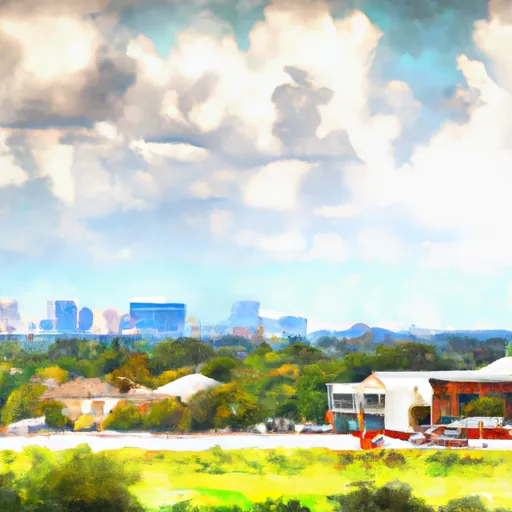-
 Snoflo Premium
Snoflo Premium
Get unlimited access to all our content
With no Ad interruptions! - Start Your Free Trial Login with existing account
West-Lake-Hills
Eden Index
Climate
8.1
•
Recreation
5.9
•
Community
7.7
•
Safeguard
7.3/10

West Lake Hills is a scenic city located in Travis County, Texas, just west of downtown Austin. The climate in West Lake Hills is characterized as humid subtropical, with hot summers and mild winters. Summers are typically hot and dry, with average temperatures reaching the high 90s°F (mid-30s°C), while winters are mild with average temperatures in the 50s°F (10-15°C). The area experiences ample sunshine throughout the year.
Hydrologically, West Lake Hills is situated within the Colorado River basin. The area is blessed with several water bodies, including Lake Austin, which offers opportunities for boating, fishing, and water sports. The Barton Creek Greenbelt, a popular nature preserve, offers hiking trails, swimming holes, and rock climbing, providing outdoor enthusiasts with ample recreation opportunities.
West Lake Hills is known for its beautiful natural surroundings, with rolling hills, lush green landscapes, and stunning views. The city boasts several parks and open spaces, such as the Wild Basin Wilderness Preserve and the Red Bud Isle Park, which provide opportunities for picnicking, hiking, and wildlife observation.
In summary, West Lake Hills offers a desirable climate, access to water bodies, and a variety of outdoor recreational activities, making it an ideal destination for nature lovers and outdoor enthusiasts.
What is the Eden Index?
The Snoflo Eden Index serves as a comprehensive rating system for regions, evaluating their desirability through a holistic assessment of climate health, outdoor recreation opportunities, and natural disaster risk, acknowledging the profound impact of these factors on livability and well-being.
Climate Health Indicator (CHI): 8.1
West-Lake-Hills receives approximately
846mm of rain per year,
with humidity levels near 83%
and air temperatures averaging around
20°C.
West-Lake-Hills has a plant hardyness factor of
8, meaning
plants and agriculture in this region tend to thrive here all year round.
By considering the ideal temperature range, reliable water supplies, clean air, and stable seasonal rain or snowpacks, the Climate Health Indicator (CHI) underscores the significance of a healthy climate as the foundation for quality living.
A healthy climate is paramount for ensuring a high quality of life and livability in a region, fostering both physical well-being and environmental harmony. This can be characterized by ideal temperatures, reliable access to water supplies, clean air, and consistent seasonal rain or snowpacks.
Weather Forecast
Streamflow Conditions
Middle Colorado-Llano
Area Rivers
Middle Colorado-Llano
Snowpack Depths
Middle Colorado-Llano
Reservoir Storage Capacity
Middle Colorado-Llano
Groundwater Levels
Recreational Opportunity Index (ROI): 5.9
The Recreational Opportunity Index (ROI) recognizes the value of outdoor recreational options, such as parks, hiking trails, camping sites, and fishing spots, while acknowledging that climate plays a pivotal role in ensuring the comfort and consistency of these experiences.
Access to outdoor recreational opportunities, encompassing activities such as parks, hiking, camping, and fishing, is crucial for overall well-being, and the climate plays a pivotal role in enabling and enhancing these experiences, ensuring that individuals can engage in nature-based activities comfortably and consistently.
Camping Areas
| Campground | Campsites | Reservations | Toilets | Showers | Elevation |
|---|---|---|---|---|---|
| Camp Mabry Military | None | 654 ft | |||
| Berry Springs Park and Preserve | None | 673 ft | |||
| Jim Hogg - Lake Georgetown | None | 880 ft | |||
| Pace Bend Park - Lake Travis | 420 | 781 ft | |||
| Cedar Breaks - Lake Georgetown | None | 841 ft | |||
| McKinney Falls State Park | 89 | 571 ft | |||
| Lockhart State Park | 20 | 499 ft | |||
| Cypress Creek - Lake Travis | None | 804 ft | |||
| Arkansas Bend - Lake Travis | None | 724 ft | |||
| Emma Long Metropolitan Park | 60 | 499 ft |
Nearby Ski Areas
Catastrophe Safeguard Index (CSI):
The Catastrophe Safeguard Index (CSI) recognizes that natural disaster risk, encompassing floods, fires, hurricanes, and tornadoes, can drastically affect safety and the overall appeal of an area.
The level of natural disaster risk in a region significantly affects safety and the overall livability, with climate change amplifying these risks by potentially increasing the frequency and intensity of events like floods, fires, hurricanes, and tornadoes, thereby posing substantial challenges to community resilience and well-being.
Community Resilience Indicator (CRI): 7.7
The Community Resilience Indicator (CRI) recognizes that education, healthcare, and socioeconomics are crucial to the well-being of a region. The CRI acknowledges the profound impact of these elements on residents' overall quality of life. By evaluating educational resources, healthcare accessibility, and economic inclusivity, the index captures the essential aspects that contribute to a thriving community, fostering resident satisfaction, equity, and social cohesion.

